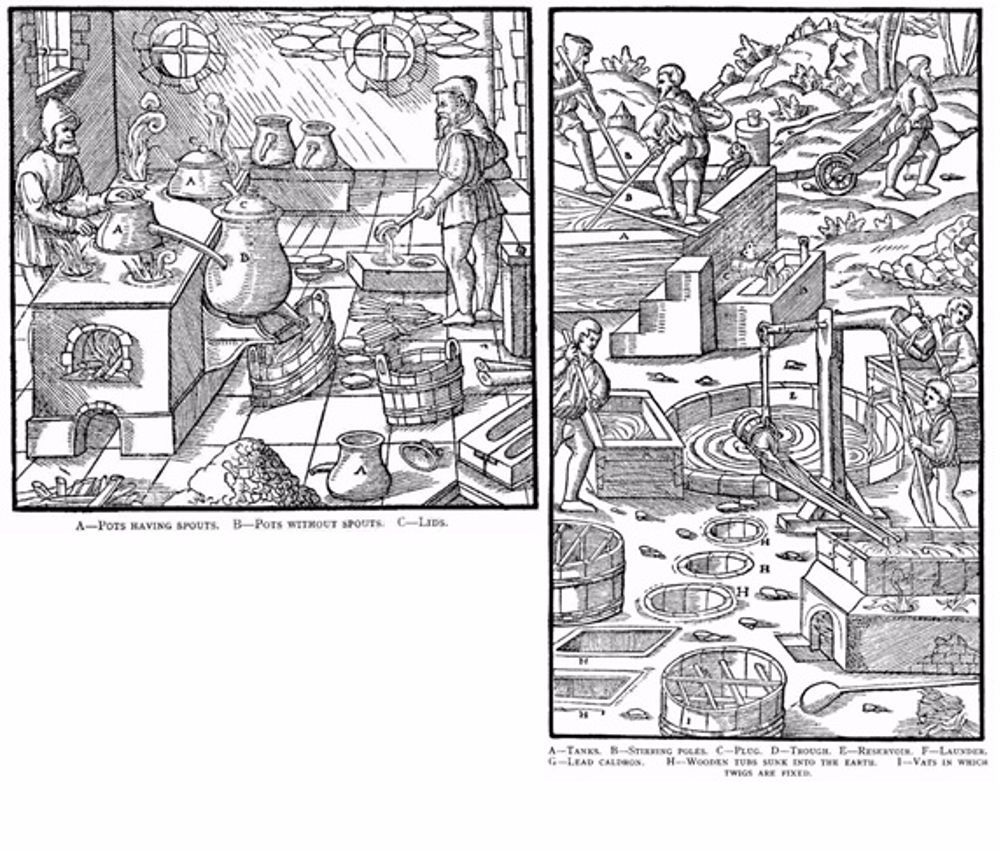The Beginnings of Chemical Engineering Education
The conversion of one substance to another on an industrial scale has gone on for thousands of years. However, each process was individual and its theoretical basis was close to witchcraft. People learnt by being shown, more or less as early humans learned how to make stone axes.
This changed in 1556 with the publication of De re Metallica vol 12 giving details of industrial production of many chemicals used in the metals industry and chemical processes for extracting metals from ores. As illustrated books these effectively provided the first distance learning of these arts, as they were called.

The 19th century provided understanding of both chemistry and energy which for the first time enabled chemical engineering to become a quantitative one based on science rather than experience, and thus requiring high level understanding of physics and chemistry.
George Davis’ 1901 handbook was the next major publication. As Davis clearly stated, a chemical engineer was someone quite different from an industrial chemist or a chemical technologist, produced by the educational institutions, and which persisted in many countries.
It crystallized the idea of a chemical engineer as a science-based specialist putting together what are now called unit operations – generic physical operations adapted to the materials rather than technology for a specific industry. This concept was picked up by the rapidly developing oil industry in the USA and Europe’s largest chemical industry in the UK, supported by some academics, notably at MIT and the London colleges and academic textbooks followed.
In its very foundation, the IChemE was considering education in line with Davis’s concept. Its first members were elected on the basis of the esteem of their fellows but in 1926 it introduced the first examination for Associate Membership based upon the Unit Studies in Chemical Engineering of MIT but also what we now call the Design Project, then called the Home Paper, a radically new concept for the time, which has been an essential feature of IChemE education standards, explicit in the brochure “Degree Course in Chemical Engineering” produced in 1945 in response to the great interest in the subject because of its importance in the war. The USA also adopted what it called the capstone project. Recognised degree holders were exempt from these examinations, eventually including some in New Zealand, South Africa and Australia.
The joint efforts of the AIChE and IChemE between the wars crystallized a view of the degree, and the wars themselves showed the need for it and the subsequent growth of institutions offering it. [Spearing, 1962, Presidential Address.]
During WWII many students studied chemical engineering part time, including Hilda Derrick, the IChemE’s first female member in 1942.